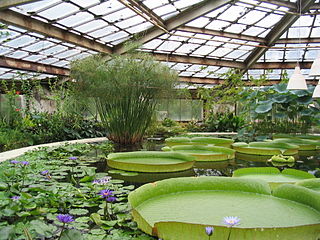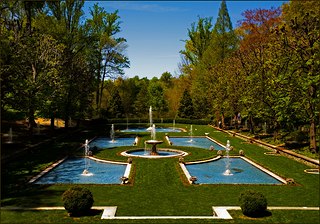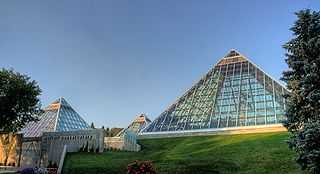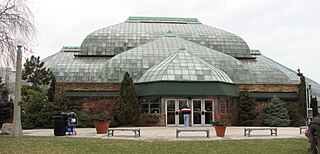
A greenhouse is a special structure that is designed to regulate the temperature and humidity of the environment inside. There are different types of greenhouses, but they all have large areas covered with transparent materials that capture sunlight and heat. The most common materials used in modern greenhouses for walls and roofs are rigid plastic made of polycarbonate, plastic film made of polyethylene, or glass panes. When the inside of a greenhouse is exposed to sunlight, the temperature increases, providing a sheltered environment for plants to grow even in cold weather.

Horticulture is the science, technology, art, and business of cultivating and using plants to improve human life. Horticulturists and Horticultural Scientists create global solutions for safe, sustainable, nutritious food and healthy, restorative, and beautiful environments. This definition is seen in its etymology, which is derived from the Latin words hortus, which means "garden" and cultura which means "to cultivate". There are various divisions of horticulture because plants are grown for a variety of purposes. These divisions include, but are not limited to: gardening, plant production/propagation, arboriculture, landscaping, floriculture and turf maintenance. For each of these, there are various professions, aspects, tools used and associated challenges; Each requiring highly specialized skills and knowledge of the horticulturist.

Longwood Gardens is a botanical garden that consists of over 1,077 acres of gardens, woodlands, and meadows in Kennett Square, Pennsylvania, United States in the Brandywine Creek Valley. It is one of the premier horticultural display gardens in the United States and is open to visitors year-round to enjoy native and exotic plants and horticulture, events and performances, seasonal and themed attractions, as well as educational lectures, courses, and workshops.

Strongylodon macrobotrys, commonly known as jade vine, emerald vine or turquoise jade vine, is a leguminous vine endemic to the Philippines. It is a popular ornamental plant known for its cascading clusters of vibrant turquoise or greenish-blue claw-shaped flowers. Cultivating jade vine requires a tropical environment, making it a popular choice in botanical gardens and conservatories. The plant's striking appearance and limited distribution contribute to its allure among plant enthusiasts worldwide.

Phipps Conservatory and Botanical Gardens is a botanical garden set in Schenley Park, Pittsburgh, Pennsylvania, United States. It is a City of Pittsburgh historic landmark and is listed on the National Register of Historic Places.

The Muttart Conservatory is a botanical garden in the North Saskatchewan river valley, across from the downtown core in Edmonton, Alberta, Canada. One of the best-known landmarks of Edmonton, the conservatory consists of three city-operated greenhouses, public gardens, as well as four feature pyramids for display of plant species found across three biomes, with the fourth pyramid hosting a seasonal display. A fifth minor skylight pyramid lights up the central foyer.

The University of Michigan Matthaei Botanical Gardens includes botanical gardens, natural areas with trails, and several research-quality habitats and is part of the organization Matthaei Botanical Gardens and Nichols Arboretum. It was established in 1907.

The Lincoln Park Conservatory is a conservatory and botanical garden in Lincoln Park in Chicago, Illinois. The conservatory is located at 2391 North Stockton Drive just south of Fullerton Avenue, west of Lake Shore Drive, and part of the Lincoln Park, Chicago community area. The Alfred Caldwell Lily Pool and the North Pond Nature Sanctuary are further to the north along Stockton Drive. Along with the Garfield Park Conservatory on Chicago's west side, the Lincoln Park Conservatory provides significant horticultural collections, educational programs and community outreach efforts.

The Gardens by the Bay is a nature park spanning 101 hectares in the Central Region of Singapore, adjacent to the Marina Reservoir. The park consists of three waterfront gardens: Bay South Garden, Bay East Garden and Bay Central Garden. The largest of the gardens is the Bay South Garden at 54 hectares designed by Grant Associates. Its Flower Dome is the largest glass greenhouse in the world.

Edmund Ware Sinnott was an American botanist and educator. Sinnott is best known for his work in plant morphology.

The Volunteer Park Conservatory is a botanical garden, conservatory, and Seattle landmark located in Seattle, Washington at the north end of Volunteer Park on Capitol Hill.
Arthur Ross was an American businessman and philanthropist. He was known for his philanthropic contributions to the arts and environmental causes, including New York City's Central Park, specifically the Arthur Ross Pinetum, as well as the Arthur Ross Greenhouse at Barnard College.

The Sakuya Konohana Kan (咲くやこの花館) is a botanical garden set within one of the world's largest greenhouses, located in Tsurumi Ryokuchi park at 2-163 Ryokuchi Koen, Tsurumi-ku, Osaka, Japan. It is open daily except Mondays; an admission fee is charged.
The Regina Floral Conservatory, in Regina, Saskatchewan, Canada, is a conservatory operated by volunteers of the Regina Garden Associates with support from the city of Regina. With tropical plants, trees and blooms, the Conservatory provides a tranquil setting for Regina residents and visitors to the city. Floral displays change regularly and feature seasonal offerings set amid greenery, moist air and the sounds of a waterfall.

Amorphophallus titanum, the titan arum, is a flowering plant in the family Araceae. It has the largest unbranched inflorescence in the world. The inflorescence of the talipot palm, Corypha umbraculifera, is larger, but it is branched rather than unbranched. A. titanum is endemic to rainforests on the Indonesian island of Sumatra.

The Niagara Parks Butterfly Conservatory is a butterfly house operated by the Niagara Parks Commission in Niagara Falls, Ontario, Canada. It is located approximately 9 kilometres (5.6 mi) north of Niagara Falls on the grounds of the Niagara Parks School of Horticulture, which is 40 hectares in size.

Milbank, Brinckerhoff, and Fiske Halls are historic buildings located on the campus of Barnard College in Morningside Heights, Manhattan, New York City. The three interconnected buildings are collectively known as Milbank Hall. They were designed by Charles A. Rich (1854–1943), built between 1897 and 1898, and contain classrooms, laboratories, administrative offices and dormitory. They are four stories on a raised basement built of dark red brick with white limestone and terra cotta details. They combine Italian Renaissance massing and detail with Colonial Revival inspired features. The roof of Milbank Hall houses the Arthur Ross Greenhouse.

Lufa Farms is an urban agricultural company located in the Ville Saint-Laurent neighborhood of Montreal, Quebec. The company states its mission is to grow food where people live and grow it more sustainably. The company, founded in 2009, has installed commercial greenhouses on the rooftops of several large industrial buildings in the greater Montreal area.

The Amazon Spheres are three spherical conservatories comprising part of the Amazon headquarters campus in Seattle, Washington, United States. Designed by NBBJ and landscape firm Site Workshop, its three glass domes are covered in pentagonal hexecontahedron panels and serve as an employee lounge and workspace. The spheres, which range from three to four stories tall, house 40,000 plants, as well as meeting space and retail stores. They are located adjoining the Day 1 building on Lenora Street. The complex opened to Amazon employees and limited public access on January 30, 2018. The spheres are reserved mainly for Amazon employees, but are open to the public through weekly headquarters tours and an exhibit on the ground floor.


















